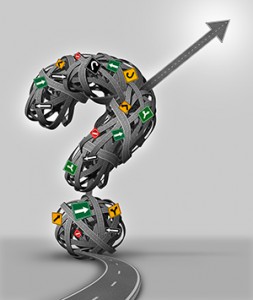 I am preparing for our upcoming AIM innovation course “Creating Business Solutions with Technology” and have been researching the use of technology in new consumer products. Whether the use of technology extends an existing product or category or develops a totally new product, it is important to balance the ability to apply technology with the actual need. Just because we can do something does not necessarily mean that it is right for the consumer and will make a better product or service. Sometimes the consumer is best served by simplicity vs. feature-rich technology. You can probably think of examples of products that miss the mark in terms of features or options that will most likely never be used, or worse yet, impede the consumer from using the product in the way they would like to. In this blog post I would like to explore that balance point between technological ability and need.
I am preparing for our upcoming AIM innovation course “Creating Business Solutions with Technology” and have been researching the use of technology in new consumer products. Whether the use of technology extends an existing product or category or develops a totally new product, it is important to balance the ability to apply technology with the actual need. Just because we can do something does not necessarily mean that it is right for the consumer and will make a better product or service. Sometimes the consumer is best served by simplicity vs. feature-rich technology. You can probably think of examples of products that miss the mark in terms of features or options that will most likely never be used, or worse yet, impede the consumer from using the product in the way they would like to. In this blog post I would like to explore that balance point between technological ability and need.
Too Much Technology
The makers of the Juicero juice maker came under fire in April when Bloomberg discovered they could make the same juice by hand that normally requires their $399 machine. The Juicero press requires proprietary prepackaged bags of chopped fruits and vegetables. However, it turns out that you can squeeze the same bag by hand and get similar results. The Juicero is wi-fi enabled so that it can read the bag’s QR code to ensure that it is legitimate and proprietary, and compares that code to a database to check that it is not past the expiration date or has been recalled. This is the Kuerig of juicers but with more limitations. I am sure that someone is working on a Juicero hack as I write this, so that you can press a freezer bag of your own produce. If the Bloomberg investigation is correct, I don’t need the machine at all. Yet, I can’t buy the bags unless I own a machine, so I am stuck. Granted, this machine does save clean-up time and effort but it also promotes waste from nonreusable bags. This company is trying to create a future revenue stream by requiring proprietary bags and providing subscriptions for automatic replenishment. There are some advantages to this product but it appears to be a case of technology gone crazy. All I want is a glass of juice.
Sensor Overload
I write often about automobile technology and I think that we are in an awkward transition period right now between traditional cars and autonomous vehicles. A lot of technology being put forward will be useful for self-driving cars. Although, will it keep us safe in the meantime? Sensor technology is being introduced to warn us about upcoming traffic or obstructions or dangers. Some vehicles even automatically correct for you if there is a present danger. I love the safety aspect of these sensors,but I am concerned that they are turning us into lazy or inattentive drivers who are lulled into a false sense of security. Until fully autonomous vehicles are commonplace, it is important to not over rely on the technology and to continue to be focused on the road and our surroundings.
Thoughts
Technology has its place, but occasionally we miss the mark in terms of what we think the consumer needs or wants. It is possible to create a technology-laden product just to create revenue without considering the end customer. This is a case of technology for technology’s sake and sometimes low-tech offers better solutions.
Which high tech products or services leave you scratching your head? Nominate your favorites here.
Kelly Brown is an IT professional and assistant professor of practice for the UO Applied Information Management Master’s Degree Program. He writes about IT and business topics that keep him up at night.




